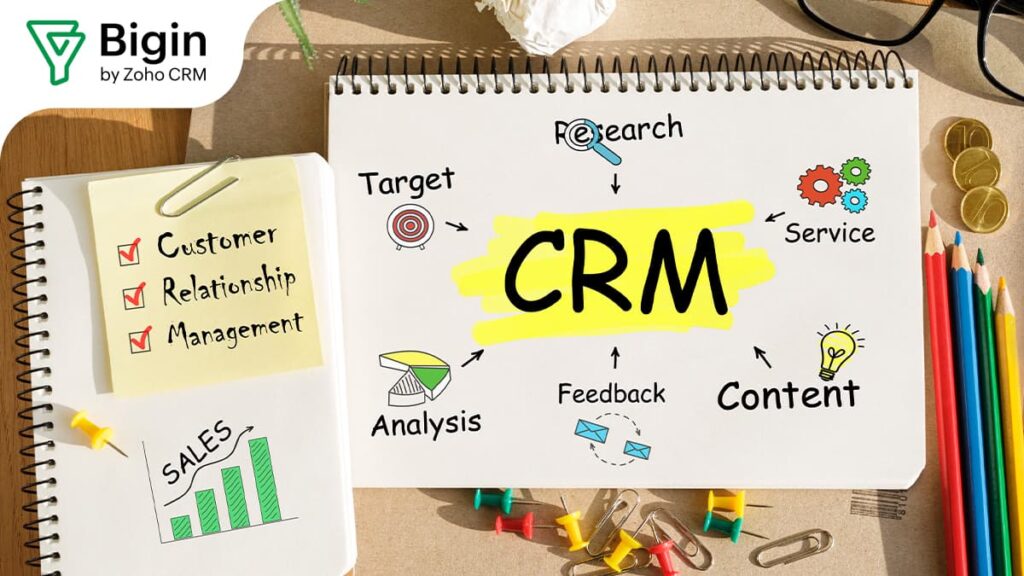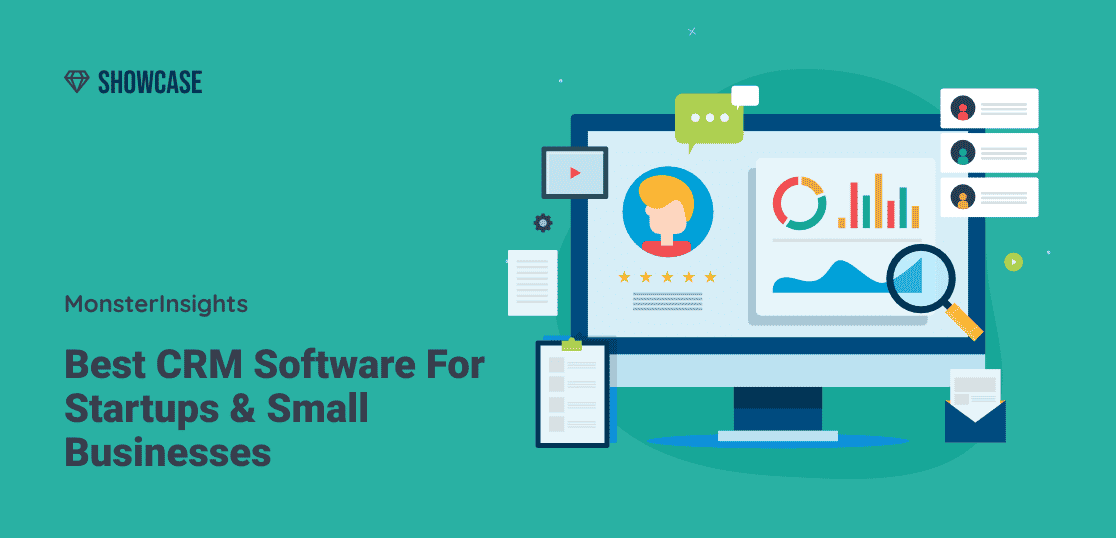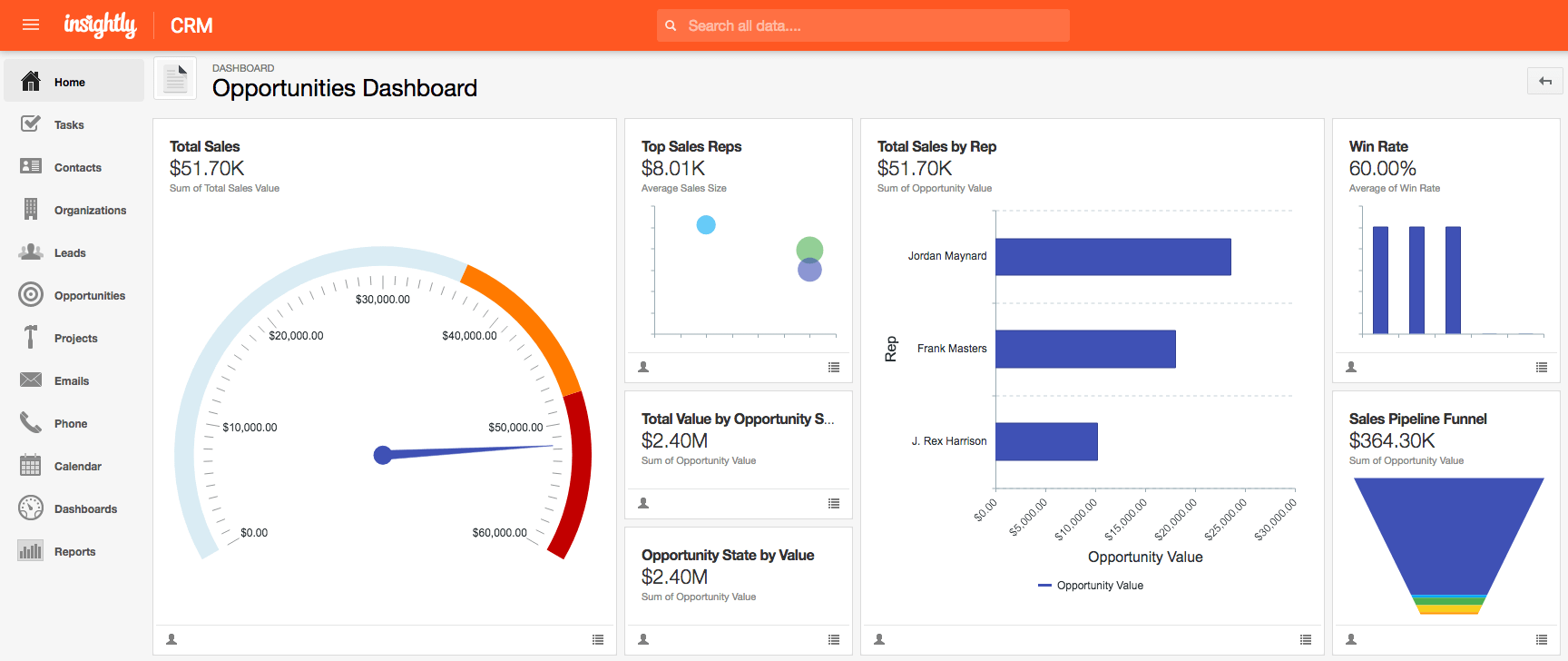
Introduction: Why a CRM is Your Small Business’s Secret Weapon in 2025
Hey there, fellow entrepreneurs! Are you ready to level up your small business game? In today’s hyper-competitive market, it’s no longer enough to just have a great product or service. You need something more – a way to truly understand and connect with your customers. That’s where a Customer Relationship Management (CRM) system comes in. Think of it as your business’s central nervous system, the brain that keeps all your customer interactions organized, efficient, and, most importantly, personalized. This comprehensive guide will walk you through everything you need to know to choose, implement, and master a CRM for your small business in 2025. We’ll cover the basics, explore advanced features, and offer practical tips to help you boost your sales, improve customer satisfaction, and ultimately, grow your business.
In 2025, the landscape of customer relationships has evolved. Customers are more informed, demanding, and connected than ever before. They expect personalized experiences, seamless interactions, and instant gratification. A CRM isn’t just a nice-to-have; it’s a must-have for survival. It’s the tool that empowers you to meet these expectations, build lasting relationships, and turn customers into loyal advocates.
Chapter 1: What is a CRM and Why Does Your Small Business Need One?
Let’s start with the basics. What exactly is a CRM? Simply put, a CRM is a system that helps you manage your interactions with current and potential customers. It’s a centralized database that stores all your customer information – contact details, purchase history, communication logs, and more. But a CRM is so much more than just a digital Rolodex. It’s a powerful tool that can:
- Centralize Customer Data: Keep all customer information in one accessible place, eliminating scattered spreadsheets and lost emails.
- Improve Sales Efficiency: Automate tasks, track leads, and prioritize opportunities to close more deals.
- Enhance Customer Service: Provide faster, more personalized support by having complete customer context at your fingertips.
- Boost Marketing Effectiveness: Segment your audience, personalize campaigns, and track your marketing ROI.
- Gain Valuable Insights: Analyze customer data to understand their behavior, preferences, and needs, and make data-driven decisions.
For a small business, the benefits of a CRM are particularly significant. You’re likely juggling multiple hats, and every minute counts. A CRM can streamline your processes, free up your time, and help you focus on what matters most: growing your business. It’s about working smarter, not harder. Without a CRM, you’re likely missing out on valuable opportunities, losing track of important details, and potentially frustrating your customers. In a nutshell, a CRM is the backbone of a customer-centric business.
Chapter 2: Key Features to Look for in a Small Business CRM in 2025
The CRM market is vast and varied. Choosing the right system can feel overwhelming. Here’s a breakdown of the essential features you should look for in a CRM tailored for small businesses in 2025:
1. Contact Management
This is the foundation of any CRM. It allows you to store and organize all your customer contact information, including names, phone numbers, email addresses, social media profiles, and more. In 2025, look for a CRM that offers:
- Advanced Search and Filtering: Quickly find the information you need with powerful search capabilities and customizable filters.
- Duplicate Detection: Prevent data clutter by automatically identifying and merging duplicate contact records.
- Automated Data Enrichment: Some CRMs can automatically populate missing information, such as social media profiles, based on an email address or company name.
2. Sales Automation
Sales automation is all about streamlining your sales process and freeing up your sales team’s time. Key features include:
- Lead Management: Track leads from initial contact to conversion, automatically assigning leads to sales reps and scoring them based on their behavior and engagement.
- Workflow Automation: Automate repetitive tasks, such as sending follow-up emails, scheduling appointments, and updating deal stages.
- Deal Management: Track the progress of your deals through your sales pipeline, from initial contact to closed-won.
- Sales Reporting and Analytics: Generate reports on sales performance, track key metrics, and identify areas for improvement.
3. Marketing Automation
Marketing automation helps you engage with your audience, nurture leads, and drive conversions. Look for these features:
- Email Marketing: Create and send targeted email campaigns, track open rates, click-through rates, and conversions.
- Segmentation: Group your contacts based on demographics, behavior, and interests to send personalized messages.
- Landing Pages: Build and manage landing pages to capture leads and promote your products or services.
- Social Media Integration: Connect your CRM to your social media accounts to track engagement, manage social media campaigns, and monitor brand mentions.
4. Customer Service and Support
A good CRM helps you provide excellent customer service. Look for these capabilities:
- Ticketing System: Manage customer inquiries, track issues, and ensure timely resolution.
- Knowledge Base: Create a library of helpful articles and FAQs to empower customers to find answers on their own.
- Live Chat Integration: Offer real-time support to customers through live chat on your website.
- Customer Feedback Surveys: Gather feedback from customers to improve your products, services, and customer experience.
5. Integrations
Your CRM should integrate seamlessly with the other tools you use, such as:
- Email Providers: Gmail, Outlook, etc.
- Accounting Software: QuickBooks, Xero, etc.
- E-commerce Platforms: Shopify, WooCommerce, etc.
- Social Media Platforms: Facebook, Twitter, LinkedIn, etc.
6. Mobile Accessibility
In today’s mobile world, it’s crucial to have a CRM that’s accessible on the go. Look for a CRM with a mobile app that allows you to access your data, manage your contacts, and track your sales activities from your smartphone or tablet.
7. Reporting and Analytics
A CRM should provide you with insights into your sales, marketing, and customer service performance. Look for features like:
- Customizable Dashboards: Display key metrics and track your progress towards your goals.
- Pre-built Reports: Generate reports on sales, marketing, and customer service performance.
- Data Visualization: Use charts and graphs to easily understand your data.
Chapter 3: Choosing the Right CRM for Your Small Business
Now that you know what to look for, how do you actually choose the right CRM for your small business? Here’s a step-by-step guide:
1. Define Your Needs and Goals
Before you start evaluating different CRM systems, take the time to define your needs and goals. What are you hoping to achieve with a CRM? What are your biggest pain points? What features are essential? Consider these questions:
- What are your primary business objectives? (e.g., increase sales, improve customer satisfaction, streamline marketing)
- What specific processes do you want to automate? (e.g., lead generation, email marketing, customer support)
- What data do you need to track? (e.g., contact information, sales pipeline, customer interactions)
- Who will be using the CRM? (e.g., sales team, marketing team, customer service reps)
Answering these questions will help you narrow down your options and choose a CRM that aligns with your business needs.
2. Research CRM Providers
Once you have a clear understanding of your needs, start researching different CRM providers. There are many options available, so it’s important to do your homework. Consider these factors:
- Pricing: CRM pricing varies widely. Consider your budget and choose a plan that fits your needs. Many providers offer different pricing tiers based on the number of users and features.
- Features: Make sure the CRM offers the features you need, as outlined in Chapter 2.
- Ease of Use: Choose a CRM that’s easy to use and navigate. A user-friendly interface will make it easier for your team to adopt the system.
- Integrations: Ensure the CRM integrates with the other tools you use, such as your email provider, accounting software, and e-commerce platform.
- Customer Support: Look for a provider that offers excellent customer support. You’ll want to be able to get help when you need it.
- Reviews and Ratings: Read reviews from other small businesses to get an idea of the CRM’s strengths and weaknesses.
3. Create a Shortlist
Based on your research, create a shortlist of 2-3 CRM providers that seem like a good fit for your business.
4. Request Demos and Free Trials
Contact the CRM providers on your shortlist and request demos and free trials. This will give you a chance to see the CRM in action and evaluate its features and ease of use. During the demo, ask the provider specific questions about your needs and goals.
5. Evaluate and Compare
After the demos and free trials, evaluate and compare the different CRM systems. Consider these factors:
- Features: Does the CRM offer all the features you need?
- Ease of Use: Is the CRM easy to use and navigate?
- Integrations: Does the CRM integrate with your other tools?
- Pricing: Is the pricing affordable and within your budget?
- Customer Support: Does the provider offer excellent customer support?
- Scalability: Can the CRM grow with your business?
6. Make Your Decision
Based on your evaluation, make your decision and choose the CRM that best meets your needs and goals. Don’t be afraid to take your time and make an informed decision. It’s an investment in your business’s future.
Chapter 4: Implementing Your CRM: A Step-by-Step Guide
You’ve chosen your CRM – congratulations! Now comes the implementation phase. This is where you set up your CRM, migrate your data, and train your team. Here’s a step-by-step guide to help you get started:
1. Plan Your Implementation
Before you start implementing your CRM, create a detailed plan. This plan should include:
- Implementation Timeline: Set a realistic timeline for the implementation process.
- Data Migration Strategy: Determine how you will migrate your existing data to the CRM.
- Training Plan: Create a training plan to ensure your team knows how to use the CRM.
- Roles and Responsibilities: Assign roles and responsibilities to different team members.
2. Set Up Your CRM
Once you have a plan in place, start setting up your CRM. This includes:
- Customizing Your CRM: Configure the CRM to meet your specific needs. This includes setting up your sales pipeline, creating custom fields, and configuring your email templates.
- Integrating with Other Tools: Connect your CRM to your other tools, such as your email provider, accounting software, and e-commerce platform.
- Importing Your Data: Import your existing data into the CRM. This may involve importing data from spreadsheets, databases, or other CRM systems.
3. Train Your Team
Training your team is crucial for successful CRM implementation. Provide your team with comprehensive training on how to use the CRM. This should include:
- Hands-on Training: Provide hands-on training to help your team learn how to use the CRM’s features.
- Documentation: Create documentation, such as user guides and FAQs, to help your team troubleshoot issues.
- Ongoing Support: Provide ongoing support to help your team use the CRM effectively.
4. Test Your CRM
Before you go live with your CRM, test it thoroughly. This includes testing the following:
- Data Accuracy: Verify that your data is accurate and complete.
- Workflow Automation: Test your workflow automation to ensure it’s working correctly.
- Integrations: Test your integrations to ensure they’re working correctly.
5. Go Live and Monitor
Once you’ve tested your CRM, you’re ready to go live. Monitor your CRM closely to ensure it’s working correctly. This includes:
- User Adoption: Monitor user adoption to ensure your team is using the CRM effectively.
- Data Quality: Monitor data quality to ensure your data is accurate and complete.
- Performance: Monitor the performance of your CRM to ensure it’s meeting your needs.
Chapter 5: Maximizing Your CRM: Best Practices for Small Businesses
You’ve implemented your CRM, but your journey doesn’t end there. To truly maximize the value of your CRM, you need to follow best practices. Here are some tips:
1. Clean and Maintain Your Data
Your CRM is only as good as the data it contains. Regularly clean and maintain your data to ensure it’s accurate and up-to-date. This includes:
- Removing Duplicate Records: Regularly merge or delete duplicate contact records.
- Updating Contact Information: Regularly update contact information, such as email addresses and phone numbers.
- Standardizing Data: Standardize your data to ensure consistency.
2. Use Your CRM Consistently
Encourage your team to use the CRM consistently. This includes:
- Entering All Customer Interactions: Make sure all customer interactions, such as phone calls, emails, and meetings, are logged in the CRM.
- Updating Deal Stages: Regularly update deal stages to track the progress of your deals.
- Using the CRM for Communication: Use the CRM for all customer communications.
3. Automate Your Processes
Take advantage of your CRM’s automation features to streamline your processes. This includes:
- Automating Lead Generation: Automate the process of generating leads.
- Automating Email Marketing: Automate your email marketing campaigns.
- Automating Task Management: Automate task management to ensure your team is staying on track.
4. Analyze Your Data
Use your CRM’s reporting and analytics features to gain insights into your sales, marketing, and customer service performance. This includes:
- Tracking Key Metrics: Track key metrics, such as sales revenue, customer acquisition cost, and customer lifetime value.
- Analyzing Your Sales Pipeline: Analyze your sales pipeline to identify bottlenecks and areas for improvement.
- Identifying Trends: Identify trends in your customer behavior and preferences.
5. Personalize Your Customer Interactions
Use your CRM to personalize your customer interactions. This includes:
- Segmenting Your Audience: Segment your audience based on demographics, behavior, and interests.
- Personalizing Your Messages: Personalize your messages to address your customers’ specific needs and interests.
- Providing Personalized Support: Provide personalized support to resolve customer issues quickly and efficiently.
6. Train and Retrain Your Team
Your CRM is a dynamic tool, and your team needs to stay up-to-date on its features and best practices. Regularly train and retrain your team on how to use the CRM effectively. This includes:
- Ongoing Training: Provide ongoing training to help your team learn new features and best practices.
- Refresher Courses: Offer refresher courses to reinforce key concepts and best practices.
- User Feedback: Gather feedback from your team to identify areas for improvement.
Chapter 6: CRM Trends for Small Businesses in 2025 and Beyond
The CRM landscape is constantly evolving. Staying ahead of the trends can give your small business a competitive edge. Here are some trends to watch out for in 2025 and beyond:
1. Artificial Intelligence (AI) and Machine Learning (ML)
AI and ML are transforming the CRM experience. Expect to see more AI-powered features, such as:
- Predictive Analytics: AI can predict customer behavior, identify potential sales opportunities, and forecast future sales.
- Chatbots and Virtual Assistants: AI-powered chatbots and virtual assistants can provide instant customer support and automate routine tasks.
- Personalized Recommendations: AI can provide personalized product recommendations and content suggestions.
2. Enhanced Personalization
Customers expect personalized experiences. CRMs will continue to evolve to help businesses deliver highly personalized interactions. This includes:
- Hyper-Personalization: Using data to create highly personalized experiences that cater to individual customer preferences.
- Dynamic Content: Delivering dynamic content that changes based on customer behavior and preferences.
- Omnichannel Experience: Providing a seamless experience across all channels, including email, social media, and live chat.
3. Increased Automation
Automation will continue to play a key role in CRM. Expect to see more advanced automation features, such as:
- Intelligent Workflows: Automating complex workflows that span multiple departments.
- Automated Data Entry: Automating data entry to reduce manual effort.
- AI-Powered Automation: Using AI to automate tasks and improve efficiency.
4. Focus on Data Privacy and Security
Data privacy and security are becoming increasingly important. CRMs will need to prioritize data privacy and security. This includes:
- Compliance with Data Privacy Regulations: Ensuring compliance with data privacy regulations, such as GDPR and CCPA.
- Robust Security Measures: Implementing robust security measures to protect customer data.
- Transparency and Control: Giving customers more control over their data.
5. Integration with Emerging Technologies
CRMs will integrate with emerging technologies, such as:
- Voice Assistants: Integrating with voice assistants, such as Alexa and Google Assistant.
- Augmented Reality (AR) and Virtual Reality (VR): Using AR and VR to enhance customer experiences.
- Blockchain: Using blockchain to improve data security and transparency.
Chapter 7: Common CRM Challenges and How to Overcome Them
Implementing and using a CRM isn’t always smooth sailing. Here are some common challenges and how to overcome them:
1. Lack of User Adoption
One of the biggest challenges is getting your team to actually use the CRM. To overcome this:
- Provide Comprehensive Training: Ensure your team receives thorough training on how to use the CRM.
- Highlight the Benefits: Clearly communicate the benefits of using the CRM to your team.
- Make it Easy to Use: Choose a CRM that’s easy to use and navigate.
- Lead by Example: Encourage managers to use the CRM and demonstrate its value.
2. Poor Data Quality
Poor data quality can undermine the effectiveness of your CRM. To address this:
- Implement Data Entry Standards: Establish clear data entry standards and guidelines.
- Use Data Validation Rules: Use data validation rules to prevent errors.
- Regularly Clean and Update Data: Regularly clean and update your data.
3. Integration Issues
Integrating your CRM with other tools can sometimes be challenging. To avoid this:
- Choose a CRM with Robust Integrations: Choose a CRM that integrates with the other tools you use.
- Test Integrations Thoroughly: Test your integrations thoroughly before going live.
- Seek Expert Help: If you encounter integration issues, seek expert help from your CRM provider or a third-party consultant.
4. Lack of Customization
If your CRM isn’t customized to your business’s specific needs, it won’t be as effective. To solve this:
- Identify Your Needs: Clearly identify your business’s specific needs before choosing a CRM.
- Choose a CRM with Customization Options: Choose a CRM that offers customization options, such as custom fields and workflows.
- Work with a CRM Consultant: If needed, work with a CRM consultant to customize your CRM.
5. Getting Started: The Overwhelm Factor
The sheer number of options and features can make getting started feel daunting. To combat this:
- Start Small: Don’t try to implement everything at once. Start with the core features and gradually add more as you become comfortable.
- Focus on Your Priorities: Identify your most important goals and focus on the features that will help you achieve them.
- Seek Help: Don’t hesitate to seek help from your CRM provider or a CRM consultant.
Chapter 8: Case Studies: CRM Success Stories for Small Businesses
Real-world examples can be a powerful source of inspiration and provide valuable insights. Let’s look at how some small businesses have leveraged CRM to achieve remarkable results:
Case Study 1: The Local Bakery
Challenge: A local bakery was struggling to manage customer orders, track preferences, and personalize their marketing efforts. They relied on a mix of spreadsheets, sticky notes, and memory, leading to missed opportunities and customer dissatisfaction.
Solution: They implemented a CRM specifically designed for small businesses. They used it to store customer contact information, track order history, and record special requests (e.g., allergies, favorite pastries). They integrated the CRM with their email marketing platform to send personalized promotions based on customer purchase history.
Results: The bakery saw a significant increase in repeat business. They were able to identify their most loyal customers and reward them with exclusive offers. They improved their order accuracy and customer satisfaction. They also gained valuable insights into their customer preferences, allowing them to tailor their product offerings.
Case Study 2: The Boutique Consulting Firm
Challenge: A small consulting firm struggled to manage leads, track the progress of proposals, and follow up with potential clients. They were losing track of opportunities and missing deadlines.
Solution: They implemented a CRM with robust sales automation features. They automated their lead management process, tracked the progress of proposals through a sales pipeline, and set up automated follow-up emails. They integrated the CRM with their calendar to schedule appointments and track meeting notes.
Results: The consulting firm saw a dramatic improvement in their sales efficiency. They closed more deals, reduced the time it took to close deals, and improved their win rate. They were able to track their sales performance and identify areas for improvement.
Case Study 3: The E-commerce Startup
Challenge: An e-commerce startup was struggling to provide personalized customer service and manage customer inquiries efficiently. They were relying on email and spreadsheets, leading to slow response times and frustrated customers.
Solution: They implemented a CRM with customer service features, including a ticketing system and live chat integration. They used the CRM to manage customer inquiries, track issues, and provide faster, more personalized support. They integrated the CRM with their e-commerce platform to have complete customer context at their fingertips.
Results: The e-commerce startup significantly improved their customer service. They reduced their response times, improved their customer satisfaction scores, and increased customer loyalty. They were able to identify and address customer issues more efficiently.
Conclusion: Your CRM Journey Starts Now
Congratulations! You’ve made it through this comprehensive guide to small business CRMs in 2025. You now have the knowledge and tools you need to choose, implement, and master a CRM that will transform your business. Remember, a CRM is more than just software; it’s a strategic investment in your customer relationships and your future success.
Don’t wait. The time to act is now. Start by assessing your needs, researching your options, and taking the first step towards a more customer-centric business. Embrace the power of a CRM, and watch your small business thrive in 2025 and beyond. Good luck, and happy CRM-ing!


